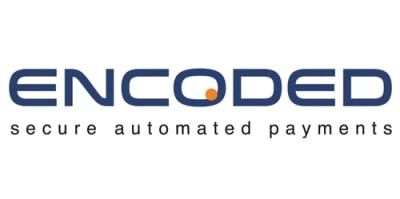Understanding declined codes – 3 ways to improve acceptance rates. Rob Crutchington at payment service provider, Encoded discusses how understanding more about declined transaction codes could make a difference to the bottom line.

For all businesses managing cash flow is a top priority, which means ensuring that payments are processed efficiently and ideally first time. Of course, there will always be instances when a card is declined by the issuing bank and this can be for many different reasons. The real problem for merchant businesses is just receiving a declined error message and not knowing why the payments was declined.
Without sufficient details for the reason, which may vary from there being insufficient funds, to the customer typing the wrong security number or the bank suspecting fraud, it may not make sense to represent the card for payment. Particularly as each time the card is presented there is a cost associated, as both the Acquirer and Gateway require payment.
The devil is in the detail
Having the right information from the declined response code can make a big difference to deciding what action to take next. For example, if the response code advises that the address requires verification, resubmitting the details a second time perhaps with the postcode rather than house name, may result in a successful transaction.
There are over 40 potential different declined codes, which many acquirers group into seven or nine generic codes. These can be anything from insufficient funds or address criteria not met to out of date, stolen or lost card, without any further detail.
This list of codes is sometimes categorized into ‘soft’ and ‘hard’ by payment gateway providers. With soft codes, the reasons that payments are often declined can be due to insufficient funds in the account, the number of transactions supported, or fraud concern – in such cases they can be resubmitted. Hard codes reflect more factual reasons, such as incorrect expiry date, the limit has been exceeded, a new card has been issued or the customer has cancelled the transaction. In these instances, resubmitting the payment request by the merchant will not be successful.
Valuable insight helps make the right decisions
An important measurement for all merchants is the payment decline ratio, which can be seriously inflated by repeated attempts on the same card. For example, some organisations expect a 45% declined rate in card payments because they might be a target for fraud, or have stringent criteria for a transaction to be accepted, which if not met, means that the card is declined and the declined rates increase. While this rate may be acceptable to some organisations, most industry specialists would recommend aiming for a 10% decline rate on transactions – any higher and it is probably time to take action.
Having the information why a card is declined makes a big difference to the action that a business might take. For example, if it is because of insufficient funds, there is no point trying to take the money on the same day. This might be the case for a monthly subscription, when it is important to consider the best time to take the payment, especially if the customer has several debits scheduled over the same few days. There are also rules as to how often a card can be presented within certain timescales, which is an additional cost to merchants that needs to be considered.
At Encoded, we have identified three ways to help merchants navigate their way through the tricky issue of declined codes:
1. Choose a payment gateway provider that offers the option of more codes – the more specific information you have on declined payments, a more educated follow-up can be actioned. It can make the difference between success and failure in terms of profitability.
2. Analyse your declined transaction rates – with the right code information you can analyse how many/what percentage of the declined codes were due to which reasons over a set period of time. For example, if 20% were due to insufficient funds, or a bank that won’t accept transactions from a particular country, then changing when you send out bills, or researching another bank that does accommodate sales in that area may reduce the decline rate.
It’s down to scale, if just one or two transactions are declined in a month it’s not going to impact your bottom line, but if you are getting 15,000 transactions a month declined, reducing the percentage by even 5% could make a significant difference to costs and profitability.
3. Identify which declined codes are actionable – understanding whether the declined rates are actionable could make a difference to increasing the number of payments accepted. For example, if your most common declined code happens to be ‘CVV required’, then you can make card security codes mandatory for new orders.
Alternatively, it may be that you are receiving the same declined code for recurring purchases, in which case you can decide that CVV should not be mandatory for recurring transactions, such as monthly subscriptions. Changing criteria in this way could also result in less calls or letters to customers to rectify issues – which represents a significant saving when studies have shown that every outbound call costs £80 or more.
The good news is that there are payment gateway providers that make it their business to help reduce the number of declined transactions for merchants. Encoded and cashflows.com provide reliable technology solutions designed to facilitate faster card payments – a must have for merchants. With the right information to hand, merchants can ensure every transaction is a profitable one.
![]()
 Rob Crutchington is Managing Director at Encoded.
Rob Crutchington is Managing Director at Encoded.
Encoded is a leading Payment Service Provider and pioneer of new and innovative secure payment solutions for contact centres. Encoded offers a range of card payment solutions designed to help organisations comply with PCI DSS, GDPR and the newly introduced Payment Services Directive (PSD2).
Encoded’s solutions are trusted by many of the world’s leading brands including, Samsung, Mercedes-Benz, BMW, Müller and Virgin, as well as a host of UK utility companies such as Green Star Energy, Severn Trent Water and Anglian Water.
 Omni-channel solutions include: Agent Assisted Card Payments, E-Commerce payments, IVR Payments , Mobile Apps, PayByLink Mobile Payments and Virtual Terminal Payments
Omni-channel solutions include: Agent Assisted Card Payments, E-Commerce payments, IVR Payments , Mobile Apps, PayByLink Mobile Payments and Virtual Terminal Payments
For additional information on Encoded view their Company Profile



